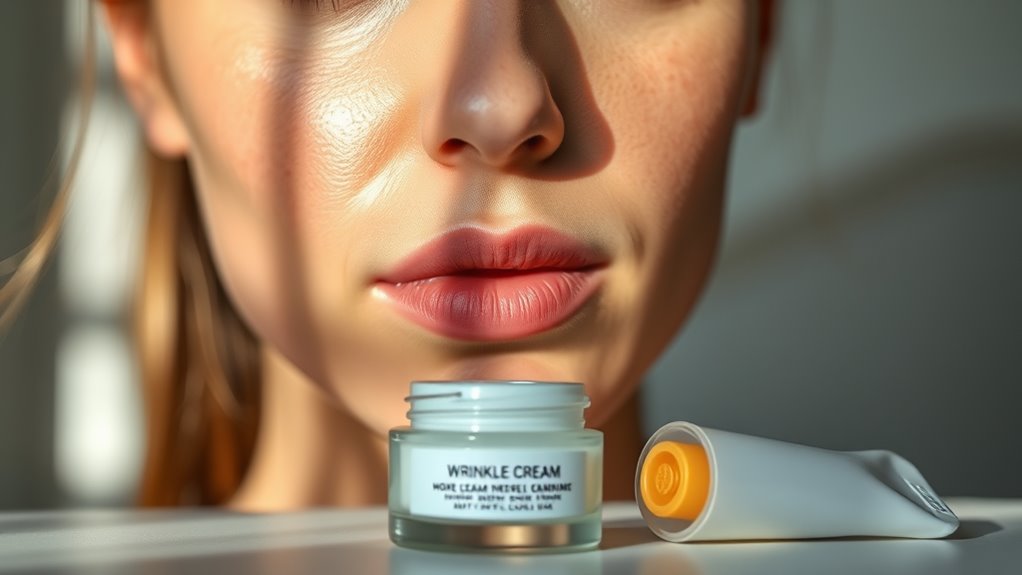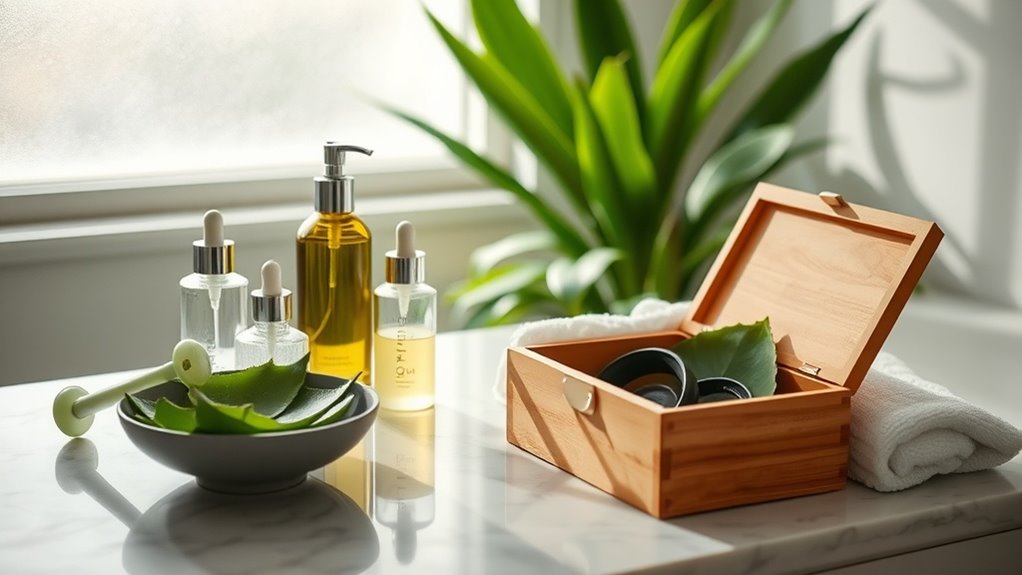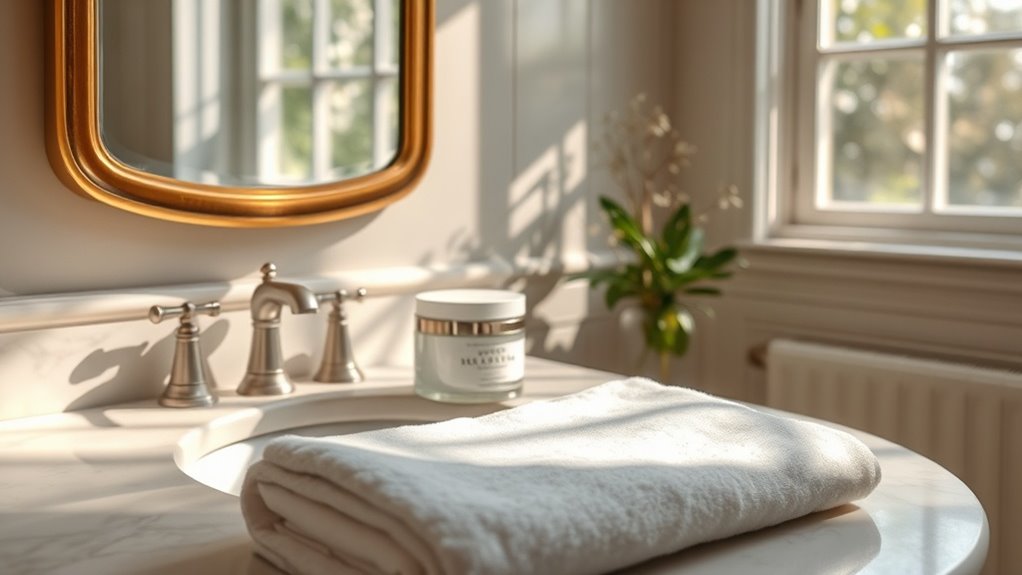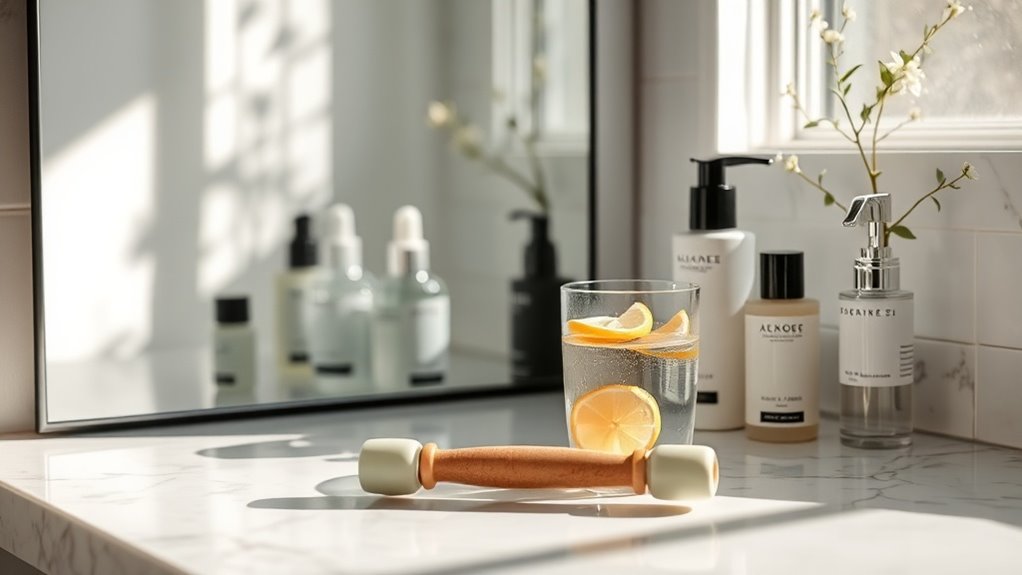Why Your Wrinkle Cream Isn’t Working – And What To Do Instead
If your wrinkle cream isn’t delivering the results you expected, it could be due to several factors. Inconsistent application, unsuitable ingredients for your skin type, or common usage mistakes might be sabotaging your efforts. Understanding the active components of your product is crucial. So, what should you focus on to achieve the anti-aging benefits you desire? Let’s explore the key aspects that can make a significant difference.
Key Takeaways
- Your wrinkle cream may lack effective ingredients; ensure it contains retinoids, hyaluronic acid, or peptides for better results.
- Inconsistent application prevents active ingredients from working; establish a regular skincare routine to boost effectiveness.
- Using too much product can cause irritation and waste; apply a pea-sized amount for optimal absorption.
- Mixing incompatible products can negate benefits; avoid combining retinoids with exfoliants to maintain efficacy.
- If over-the-counter products fail, consider professional treatments like chemical peels or microneedling for enhanced results.
Understanding the Ingredients in Your Wrinkle Cream
How well do you know the ingredients in your wrinkle cream?
Understanding these components is crucial for effective anti-aging solutions.
Look for ingredients like retinoids, which promote cell turnover, or hyaluronic acid, known for its hydration properties.
Peptides signal collagen production, while antioxidants like vitamin C protect against free radical damage. Incorporating key anti-aging ingredients into your skincare routine can enhance overall skin health.
When selecting products, prioritize formulations with proven efficacy and avoid harmful additives.
These anti-aging product tips can help you make informed decisions.
The Importance of Consistency in Skincare
Why is consistency so vital in your skincare routine?
Regular application of products ensures that active ingredients penetrate the skin effectively, promoting cellular turnover and collagen production.
Regular product application allows active ingredients to penetrate deeply, enhancing cellular turnover and boosting collagen production.
Skincare benefits accumulate over time; intermittent use can hinder optimal results.
For instance, retinoids require consistent use to reveal their full anti-aging potential, while moisturizers maintain hydration levels only when applied regularly.
Moreover, skin adapts to routine, enhancing product efficacy.
Without consistency, you risk suboptimal skin health, leading to frustration with your wrinkle cream.
Therefore, commit to a daily regimen to maximize benefits and achieve the youthful, radiant skin you desire. Additionally, incorporating the power of retinol can further enhance your skincare routine, addressing both acne and signs of aging effectively.
Age and Skin Type: Are You Using the Right Product?
When considering your skincare routine, have you thought about how your age and skin type influence the effectiveness of your products? Different age groups and skin types require tailored ingredients for optimal results.
| Age Group | Skin Type | Recommended Ingredients |
|——————|——————|————————–|
| 20s | Oily | Salicylic acid, Niacinamide |
| 30s | Combination | Hyaluronic acid, Peptides |
| 40s and up | Dry/Sensitive | Retinol, Ceramides |
Identifying your skin’s needs based on age and type ensures you’re using the right products, maximizing their efficacy in addressing wrinkles and other concerns. Additionally, incorporating science-backed ingredients into your routine can significantly enhance your skin’s appearance and combat aging effectively.
Common Application Mistakes to Avoid
Selecting the right ingredients based on your age and skin type is only part of the equation; proper application techniques also play a significant role in the effectiveness of wrinkle creams.
Common mistakes include applying on dirty skin, which can hinder absorption, and using too much product, leading to waste and potential irritation.
Don’t forget to apply in an upward motion, as this can help enhance circulation and product penetration.
Additionally, be cautious about mixing products; certain ingredients can counteract each other.
Lastly, always allow the product to absorb fully before layering any additional skincare. Proper layering techniques can significantly enhance the benefits of your wrinkle cream.
When to Consider Professional Treatments
Are you noticing that over-the-counter wrinkle creams aren’t delivering the results you hoped for?
It might be time to explore professional treatments.
If your wrinkles are deepening or skin texture is significantly changing, consult a dermatologist.
They can assess your skin’s condition and recommend options like chemical peels, laser therapy, or injectable treatments.
These procedures can stimulate collagen production, enhance skin elasticity, and provide more immediate results than topical creams. Additionally, incorporating effective anti-aging tips into your routine can further complement these professional treatments.
If you have specific concerns like sun damage or uneven skin tone, professional interventions can target these issues effectively, offering a tailored approach to your skin’s needs.
Alternative Anti-Aging Solutions to Explore
While traditional wrinkle creams may fall short of expectations, there are several alternative anti-aging solutions worth considering. These options often provide more effective results through different mechanisms.
| Solution | Benefits |
|————————|———————————–|
| Retinoids | Stimulate collagen production |
| Chemical Peels | Remove dead skin, enhance texture |
| Microneedling | Boosts skin rejuvenation |
| Hyaluronic Acid Fillers | Immediate plumping effect |
Incorporating an effective anti-aging routine can further enhance the benefits of these alternative solutions.




